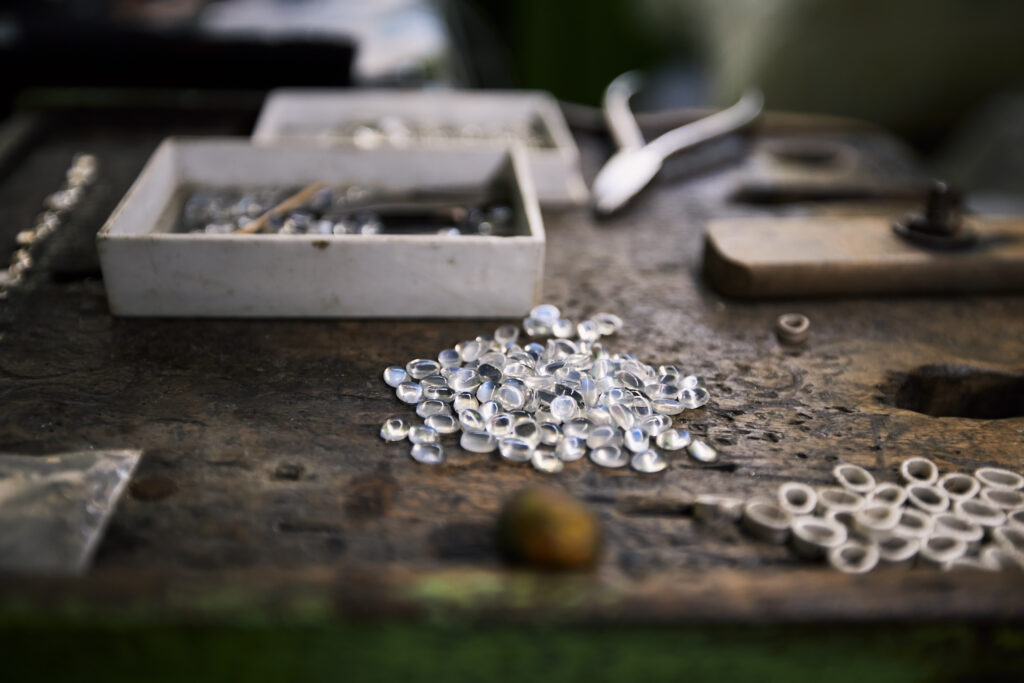Introduction
Gemstones have fascinated humanity for centuries, captivating us with their mesmerizing colors, unique patterns, and inherent beauty. As a jewelry enthusiast, understanding the characteristics of gemstones is crucial in making informed choices when selecting the perfect piece for your collection. Two key factors that play a significant role in a gemstone’s durability are hardness and toughness. In this blog, we’ll delve into the world of gemstone hardness and toughness to help you appreciate these remarkable creations of nature.

Gemstone Hardness
Hardness refers to a gemstone’s resistance to scratches and abrasions. The Mohs scale, developed by Friedrich Mohs in 1812, is widely used to measure and compare the hardness of various minerals. The scale ranges from 1 to 10, with 1 being the softest and 10 the hardest.
- Talc
- Gypsum
- Calcite
- Fluorite
- Apatite
- Orthoclase Feldspar
- Quartz
- Topaz
- Corundum
- Diamond
Diamond, with a Mohs hardness of 10, is the hardest mineral on the scale and can scratch any other mineral. However, it’s important to note that a gemstone’s hardness alone doesn’t determine its overall durability, as toughness plays a complementary role.
Gemstone Toughness
Toughness is the ability of a gemstone to withstand impact, pressure, or any form of external force without breaking or chipping. Some gemstones may be hard but lack toughness, making them susceptible to fractures or cleavages.
- Jadeite
- Nephrite
- Quartz
- Topaz
- Beryl
- Spinel
- Corundum (Sapphire and Ruby)
- Diamond
It’s worth mentioning that diamonds, while incredibly hard, can be brittle, making them vulnerable to chipping under certain conditions. Conversely, gemstones like jadeite and nephrite may not be as hard as diamonds, but their exceptional toughness makes them resistant to breakage.

Choosing the Right Gemstone
When selecting gemstones for jewelry, consider your lifestyle, the intended use of the piece, and the gemstone’s hardness and toughness. For everyday wear, opt for durable gemstones like sapphires, rubies, or spinel, which strike a balance between hardness and toughness. If you prefer a softer gemstone, such as opal or pearl, be mindful of their care requirements and wear them on special occasions to minimize the risk of damage.
Caring for Your Gemstones
Proper care is essential to maintain the beauty and longevity of your gemstone jewelry. Avoid exposing gemstones to harsh chemicals, extreme temperatures, and sudden impacts. Regular cleaning with a soft brush, mild soap, and warm water will help preserve their brilliance.
Conclusion
Gemstone hardness and toughness are crucial factors to consider when building a jewelry collection. By understanding these characteristics, you can make informed choices that align with your preferences and lifestyle. Whether you’re drawn to the brilliance of diamonds or the vibrant hues of sapphires, each gemstone tells a unique story, adding a touch of elegance and sophistication to your personal style.